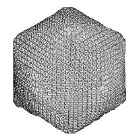Plant Pathology, Department of

James Van Etten Publications
Document Type
Article
Date of this Version
4-2016
Citation
Published in Archives of Virology 161 (2016), pp 1839–1847. doi 10.1007/s00705-016-2853-4
Abstract
Inland water environments cover about 2.5 percent of our planet and harbor huge numbers of known and still unknown microorganisms. In this report, we examined water samples for the abundance, prevalence, and genetic diversity of a group of infectious viruses (chloroviruses) that infect symbiotic chlorella-like green algae. Samples were collected on a weekly basis for a period of 24 to 36 months from a recreational freshwater lake in Lincoln, Nebraska, and assayed for infectious viruses by plaque assay. The numbers of infectious virus particles were both host- and site-dependent. The consistent fluctuations in numbers of viruses suggest their impact as key factors in shaping microbial community structures in the water surface. Even in low-viral-abundance months, infectious chlorovirus populations were maintained, suggesting either that the viruses are very stable or that there is ongoing viral production in natural hosts.
Includes supplementary figure.


Comments
Copyright © 2016 Springer-Verlag Wien. Used by permission.